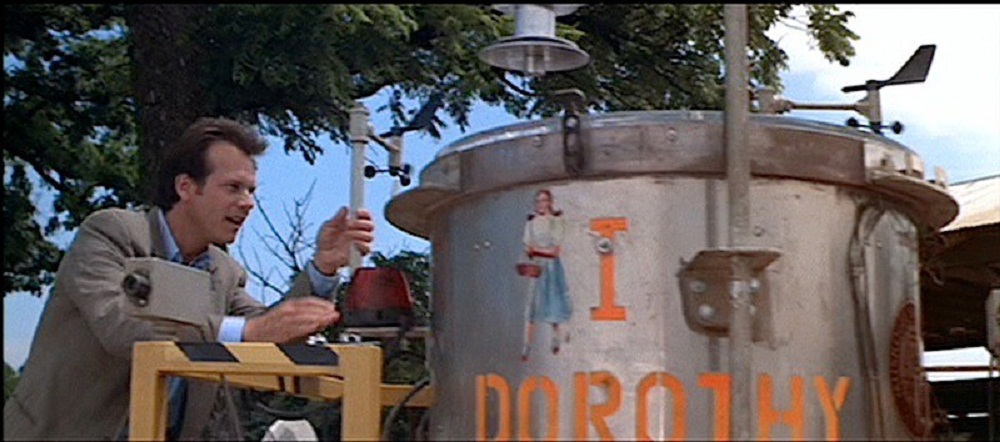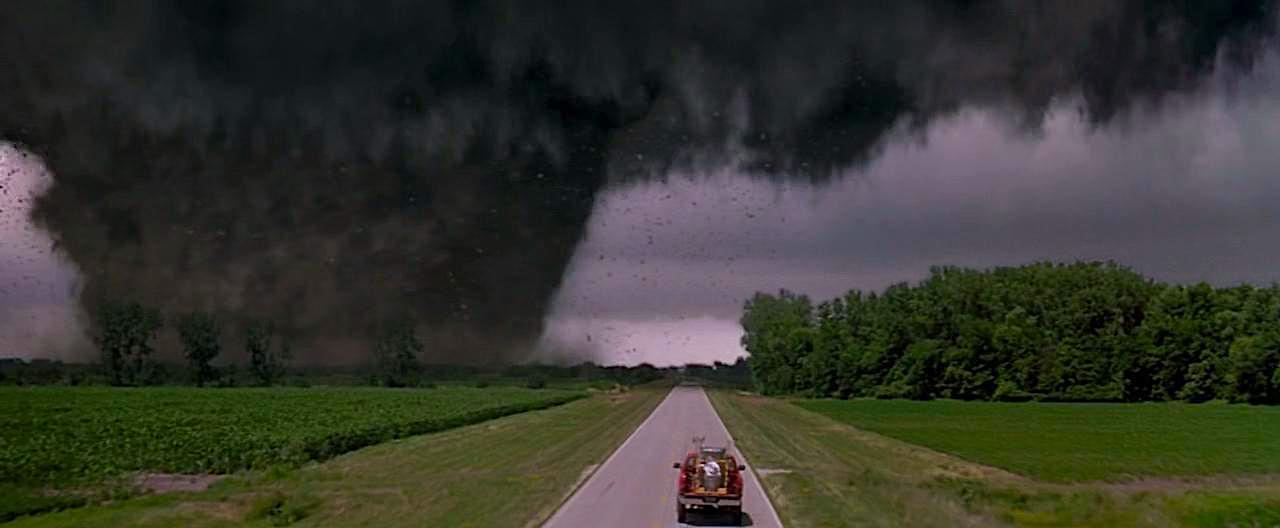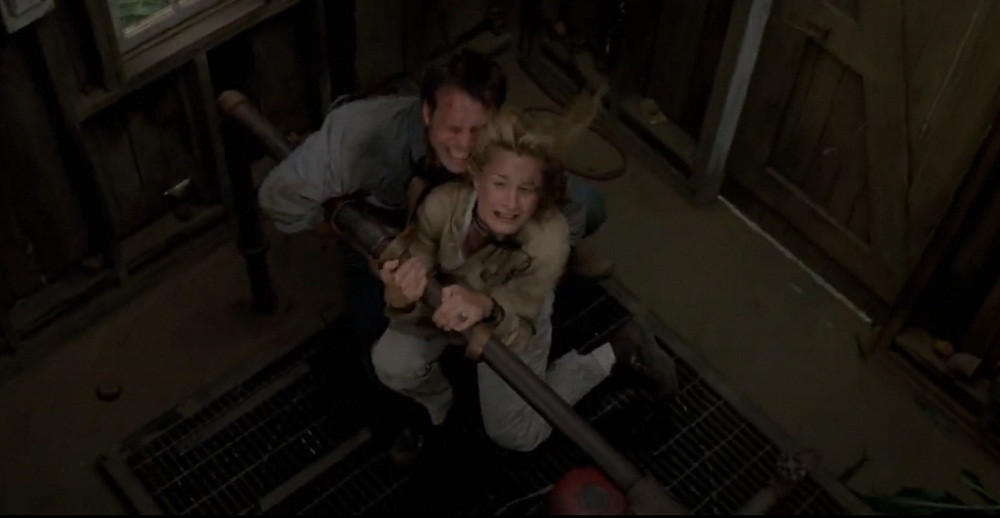Most disaster movies just fulfill our guilty pleasures of watching the world burn. But there’s also a subgenre of such films that contextualize the real risk that comes with catastrophes. ‘Twister’ (1996) happens to be one of those few disaster movies that hit closer to home (no pun intended) with its depiction of real perils, which people have experienced with calamities that have come to pass. Speaking of its realism, the film also uses some technical jargon here and there which may not exactly be comprehensible for many viewers. So further down in this article, we’ll be explaining some of its technical terms along with its ending.
How Does Dorothy Work?

One big reason why Jo, Bill, and their team chase tornadoes is that they intend to use their instrument, labeled as Dorothy, to deeply study them. This study will, in turn, allow them to have a deep knowledge of the inside of the funnel of a tornado and will also help them create an early warning system for those who are usually affected by it. The instrument is named after Dorothy from ‘The Wizard of Oz’ who, in the original tale, gets caught up in a twister before finding herself in the Land of Oz. In the movie ‘Twister’, Dorothy stands for Digital Orthographic Telemeter and is used for measuring several parameters of tornadoes including atmospheric pressure, dew point temperatures, satellite com-link, on-pulse doppler radar, among others.
Throughout the film’s runtime, Jo and Bill try to figure out a way to set Dorothy in the path of a tornado so that little sensors inside it can fly off into the funnel of the twister and take all the necessary readings that they need. The first and second Dorothy get badly damaged when Jo and Bill are not able to set it up in the tornado’s expected root on time. With Dorothy III, when Jo and Bill are finally able to set it on the tornado’s path, they realize that the whole contraption of Dorothy is too light. Because of which, instead of flying right into the twister, the instrument simply gets knocked down and spills all of its sensors.
The unstable contraption of Dorothy makes them realize that they need to do something more to ensure that its sensors are able to fly right out of it. Aunt Meg’s giant wind chimes give them the idea of attaching wings to Dorothy’s sensors which would make them more aerodynamic. Using cans of soda, they attach wings to each sensor and when they run into the final Fujita-5 Oklahoma tornado, they leave Dorothy anchored to the truck to add more weight to it. This coupled with the wings on the sensors eventually allows the sensors to soar up into the funnel, making their launch a success.
What’s a Fujita-5 Twister?

There are several scenes in the movie where Jo’s crew keeps referring to the intensity of tornadoes in context with their value on a certain Fujita scale. In the closing scenes, the movie makes it pretty evident that a Fujita-5 tornado is extremely destructive. But in technical terms, a Fujita scale measures the intensity of a tornado based on the damage a tornado can inflict on man-made structures and natural vegetation. Fujita-5 happens to be the last level of this scale and is used for describing a tornado that can cause an incredible amount of damage. In the film, the Fujita-5 twister is depicted in the opening and closing scene.
The Ending: Jo’s Redemption

In the opening scene of ‘Twister’, a family of three rushes down to its tornado protection shed. The father in the family holds down the door of the shed. But eventually, the door of the shed breaks loose and he gets blown away into the funnel of the twister while his wife and daughter just helplessly stand there watching him. Later in the movie, there’s a scene where Jo’s crew stops by at Aunt Meg’s place for lunch. That’s when they start discussing all the scales of tornadoes that they’ve experienced and even claim that only one of them has seen a Fujita-5 twister.
Soon after this, when Jo and Bill fail to launch Dorothy II, Jo starts panicking and even attempts to pick up all the sensors that are left lying in the middle of the road. This is when Bill confronts her and tells her that she needs to forget her past and get over the loss of her father. Although it isn’t directly implied, this scene makes it pretty evident that the little girl in the opening scene of the movie is Jo. Her father’s death is what inspired her to become a meteorologist and find a more efficient way to predict tornadoes. This also explains that the crew was referring to Jo when they claimed that only one of them has seen a Fujita-5 twister.
In the closing moments of the film, Jo and Bill are finally able to release their sensors into a Fujita 5 twister. But soon after this, the twister changes its course and starts heading towards them. Just like the opening scene of the film, Jo faces a Fujita 5 all over again, but this time with Bill. They strap themselves onto pipes that go several meters underground. And because of the pipes, even when they find themselves in the epicenter of the tornado, they are able to survive its impact. The ending of the movie shows how Jo, who had initially lost her father in a Fujita-5 tornado, eventually manages to conquer it with her discovery and also with Bill’s support. With this, she not only achieves a great feat in science but is also able to accept her past and focus on her future with Bill.
Read More: Best Disaster Movies on Netflix


You must be logged in to post a comment.